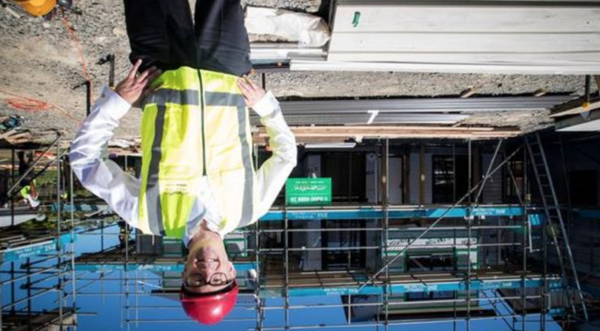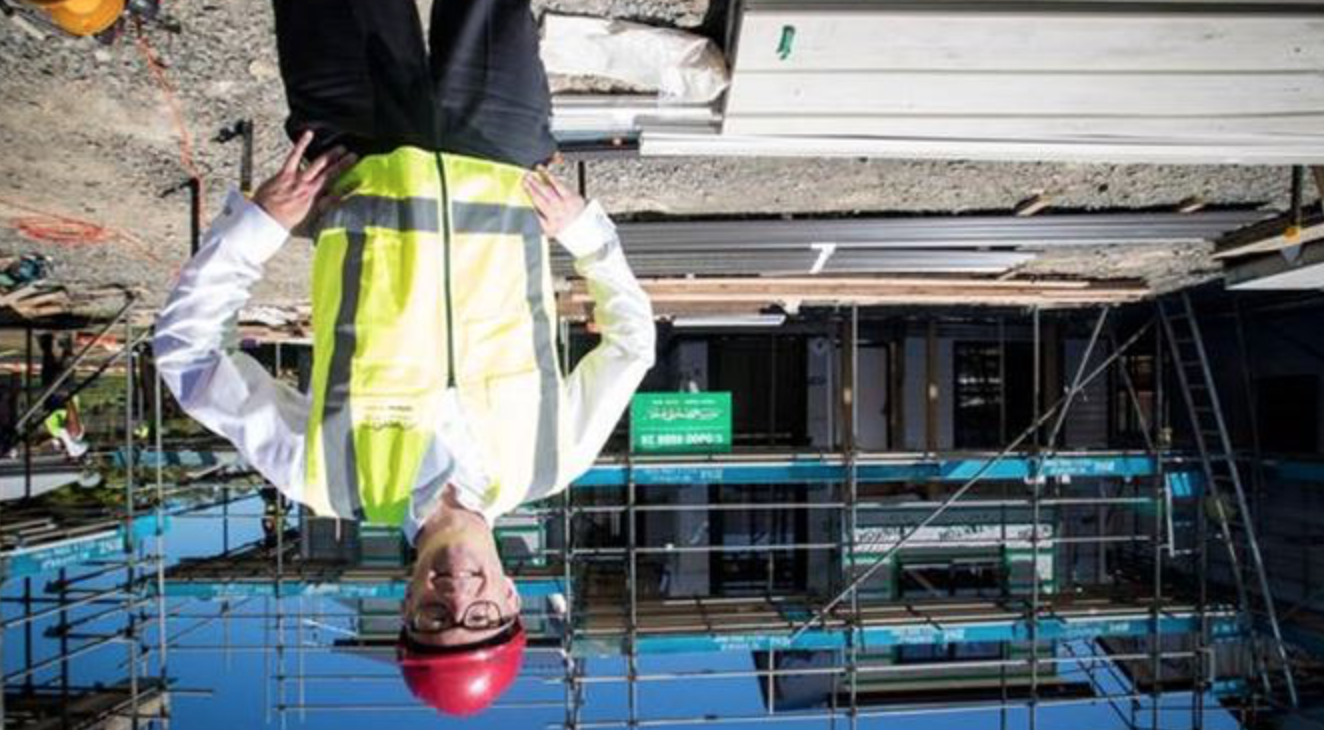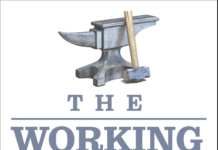
It is probably time to call the Government’s flagship KiwiBuild programme for what it is – state sponsored gentrification of state housing suburbs. As such it is little different from the previous Government’s efforts in places such as Tamaki to extract value from the public housing estate under the guise of modernisation.
To be sure the rhetoric is soaring. Ministry of Business Innovation and Employment (MBIE) claims that KiwiBuild is ‘an ambitious programme that aims to deliver 100,000 modest starter homes for first home buyers over the next decade. Around 50,000 of these homes will be in Auckland’.
The claims of modesty however are however somewhat disarming. First the Prime Minister announced that KiwiBuild homes could cost as much as $650,000 then the income threshold was set at $180,000 for a two income household which is twice the New Zealand average household income.
As broad details of the Government’s housing plans in Auckland have emerged it is obvious that state housing suburbs such as those in Northcote, Mt Roskill and Mangere are seen as candidates for some of these 100,000 ‘modest starter homes’. So much so that there is scarcely room for state housing in these areas.
For example current plans are to demolish 350 state houses in Northcote and to replace these with 1500 dwellings of which 450 will be state or social houses. This is scarcely different from the plans announced by Bill English in September 2016.
An announcement by Housing and Urban Development Minister Phil Twyford in July 2018 signalled a major ten year re-development programme in Mangere. This will see ‘2,700 worn-out state houses will be replaced by 10,000 new homes. This will comprise approximately 3,000 new state houses, 3,500 new KiwiBuild and affordable homes, and 3,500 market homes’.
A further announcement by Mr Twyford in August 2018 indicated that the Government had plans to undertake a major re-development of state housing properties in Mt Roskill. This project ‘will include more than 2,400 modest, affordable KiwiBuild homes for first home buyers, around 3,000 market homes, and more than 3,000 new state homes’ . The number of state houses being demolished in this clearance is unclear but appears to be around 3000.
Added all up the three big urban re-development projects in state house suburbs being promoted by Government seem likely to involve the demolition of 6050 state houses and the construction of up to 20,000 new dwellings. Of these around 6500 will be state or social housing units. In other words a net gain of just 400 to 500 units.
This is a massive exercise for such minimal gains in social housing and this must lead us to wonder what the overall purpose of these clearances is? It would appear that they are intended to pave the way for gentrification under the guise of KiwiBuild. After all the ‘modest affordable KiwiBuild homes for first home buyers’ which Mr Twyford refers to will in most cases cost way over $500,000 and will be available to households earning way above average incomes.
There are of course several problems with this new twist on middle class welfare. Not the least of these problems is where will additional state houses be built if state housing land is being sold off for private housing?
In June 2016 Housing New Zealand (HNZ) embarked on it Auckland Housing Programme (AHP) with its subsidiary the Hobsonville Land Company (HLC). Over the following decade these organisations expect to deliver ‘almost 11,000 additional new social housing units’ and ‘over 12,600 new and affordable homes’. The latest announcements by Mr Twyford of the re-development of Mangere and Mt Roskill appear to be part of the AHP.
The progress which Housing New Zealand is now making on re-developing small blocks of state housing for new and additional state housing units is encouraging and clearly visible in 26 suburbs across Auckland. Since 2016 HNZ has redeveloped 140 properties and created an additional 300 state units. By late 2019 the AHP is expected to have redeveloped 550 state houses with 2,300 new dwellings and to have created and additional 1700 state housing units .
But this progress is a still a long way from 11,000 additional new social housing units by 2026 and the Government’s expectation to build an extra 1600 state and social housing units a year for the next four years.
It is not altogether clear what problem or challenge KiwiBuild is meant to address and it may be possible that the programme’s biggest shortcoming is in its conception as an idea. It seems odd that a left-of-centre government should be so enthusiast about playing developer and selling off the parts of the public housing estate for private housing. This is especially so in the middle of a housing shortage and growing public housing waiting lists.
Not only is this odd but there is a chance that what the Government is busy doing in building ‘modest affordable KiwiBuild for first home buyers’ at $650K a shot is to crowd out private sector development activity. In other words these houses may have been built anyway but the state with its land holdings and financial muscle decided to build them instead.
Much has been made by Government that its $2 billion investment in KiwiBuild will leverage a further $5.4 billion in housing investment from the private sector. However it is by no means clear how this will happen. In May 2018 Mr Twyford disputed Treasury’s revised estimates of this leveraged investment which appeared in the 2018 Budget although this difference was really just a question of timing with Treasury believing that this private sector investment would occur later.
But the evidence that there will even be additional private sector investment appears quite flimsy. It seems, for example, that the idea of private sector investments comes from a simple assumption by MBIE that 40% of any KiwiBuild development would be funded by Government investment and 60% by the private sector. In making this assumption MBIE admits however ‘that no allowance has been for capacity constraints or substitution’ .
A MBIE briefing note on KiwiBuild released to Lisa Owen of Newshub points to quite serious capacity constraints within the building sector given KiwiBuild’s ambitions. This briefing note reports that the ‘National Construction Pipeline Report 2017 projects a rise in new residential dwellings to 34,500 in 2019 and 2020, up 15 percent from the 2016 levels of 30,063 consents. This level of supply will still be insufficient to meet the demand estimated by Auckland Council (ie. 14,000 dwellings each year), or to meet the additional supply targeted by KiwiBuild. The phasing of KiwiBuild, and the additional supply required in Auckland, would require a total of 44,600 new dwellings in 2022’.
KiwiBuild has the potential to become a massive nation building programme the likes of which we have not been seen since neo-liberalism arrived in Aotearoa with the Lange-Douglas Government. It can become a programme which in part defines the ambitions and ultimately the achievements of a generation in its efforts at creating a New Zealand which is more generous and inclusive. But this won’t happen while the Government fails to ignore the problems that modest income households have in affording home-ownership without some form of state subsidy. Meanwhile we continue to subsidise rents through the Accommodation Supplement and the Government hangs on to its budget responsibility rules like some sort of neo-liberal badge of courage.






Kiwi build was always there to help real estate developers boost profits so they’d help kiwi build out on the next deal with apprenticeships and labour costs. The good news is Kiwi-build is a Ponzi scheme but the good news is it helps kiwi businesses in New Zealand and there profits have boosted so that’s a boom to certainly a certain class with in the economy. 2 billion dollars is a huge sum that can be wasted. That’s the good news.
A lot of these houses used to be council housing estates that were sold off and now we’ve got central government coming in trying to fix that up as well and council just keeping quite. Now there’s a transition period where there was market economics since Rogernomics and Ruthinasia rejected socialism for the poor and now we’ve come full circle with rejecting socialism for middle class. So this help to buy scheme is a government underwriting wealthy incomes. So every one gets a shot at the lotto for a marginal discount on an Auckland property.
Under John Key all this was just given away to the wealthy so they didn’t have to bother about public transport and said the private sector can do a much better job running public transport and then everything gets sold to foreign hedge funds and wealth funds so every one else can claim the rents. If we didn’t clear this before moving on there’s just no way domestic construction firms could have helped the government out on the next deal.
Kiwibuild in Wanaka? Gotta be kidding us right?
As soon as those 3 years are up these guys will sell to the highest bidder and then it will be unaffordable again.
What about over in Dunedin where the only time you can move is when the uni students leave.
The government had a choice between building new houses, schools or hospitals and the government chose hospitals and the public and opposition parties helped them make that choice to a large extent. We couldn’t have built all three. So it’s build new hospitals, expand the housing stock on what land is already available and keep schools roughly as is.
So, all of the tenants that had to be moved out to make way for this slower than J.A.Lee’s massive house construction effort, where have they gone?
And how many completed homes has Stoner built to date? J A Lee built 3200 in 6 months! Primative by todays standards but we have technology and umptine times more resources!
“Added all up the three big urban re-development projects in state house suburbs being promoted by Government seem likely to involve the demolition of 6050 state houses and the construction of up to 20,000 new dwellings. Of these around 6500 will be state or social housing units. In other words a net gain of just 400 to 500 units.”
Indeed, and thanks, Alan, for pointing out what I have observed and repeatedly tried to point out.
We are talking about a kind of state asset sale program here, where roughly two thirds of new dwellings on so far state owned land will be privatised, catering for said first home buyers and for other buyers on the wider housing market.
Labour was keen to go on about the Nats privatising state owned electricity companies, by selling about half of their shares to private investors, and criticised that. Now when in government, they do something similar under their KiwiBuild gentrification program.
And how ‘affordable’ are these dwellings in places like Auckland, only good earning professionals will be able to buy into these homes, while the state housing and social housing tenants will be stacked on top of each other in blocks of apartments and units, some so small you would not want to live in them, because they may make a person feel claustrophobic.
these house are not affordable there only going to add to the already huge debt bomb that’s built up . we need a crash we need one badly there is no point trying to prop up a broken system blow it up and start again
It’s exactly the same as the structure of the electricty industry being the reason electricity prices are through the roof. We need to get rid of the middle people. The belief that we need middle people has become so entrenched even those on the so-called left cannot envisage a middle people-free environment. This government needs to grow some balls and undertand that they haven’t been made lawmakers to sit on their hands and do nothing.
This government was expecting to just make virtue signalling statement from the opposition benches with vague statements about what they would do if they got into government.
Then along came Winston.
Now they’ve hit the same constraints the previous government met:
1. Lack of available land in Auckland
2. A Kafkaesque consenting process
3. An inflexible rural/urban boundary preventing the creation of new subdivisions on the periphery of Auckland
In the end they cannot defeat the marketplace. A typical section in Auckland costs 800K to a million. That’s just the section. So how are they going to build homes for 650K? By using land they already own.
Comments are closed.